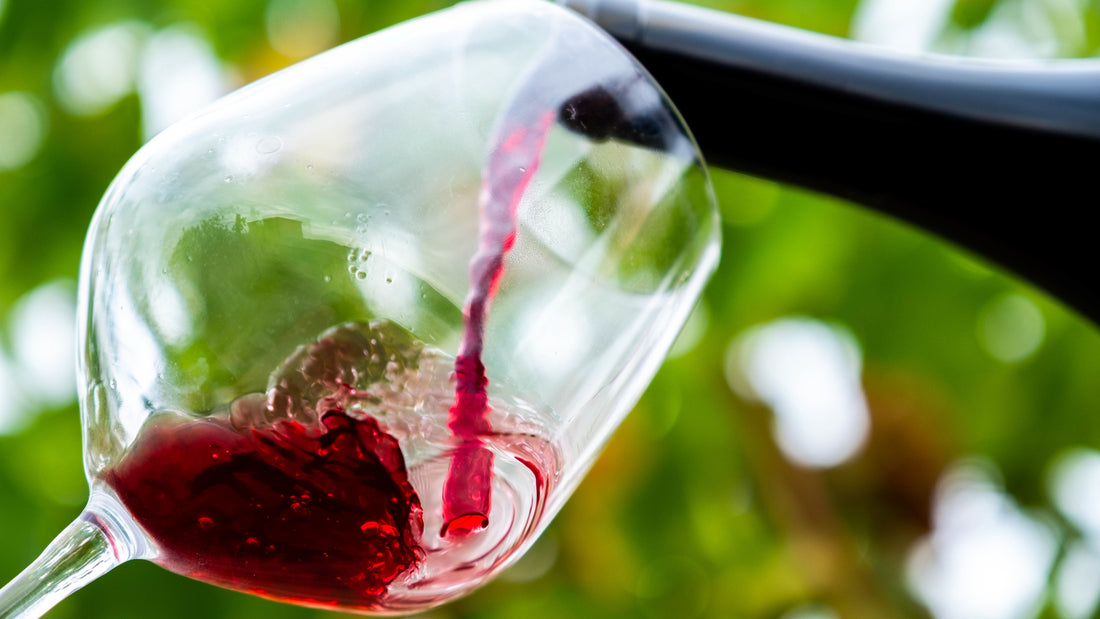The myth: Red wine turns your teeth purple.
We often hear people say they avoid red wine because they don’t like the way it stains their teeth.
It’s true—certain red wines can leave your mouth an unappealing shade of purple or gray. But if you’ve given up red wine to avoid staining your teeth, we have good news: there are plenty of reds you can drink. You only need to avoid a certain type of red wine.
Why Do Some Red Wines Stain Your Teeth?
The winemaking process doesn’t change much between red and white wines. One of the major differences is that red wines ferment with grape skins left in contact with the juice, while white wines do not.
The additional skin contact during fermentation is what gives red wine its color. It’s like steeping tea: colorful red and purple compounds in the grape skins transfer into the wine as it sits. By the time it finishes fermenting, the wine is a vibrant shade of red.
Conventional wine companies have another option. They can enhance the color of their wines with Mega Purple, an ultra-concentrated grape juice that dyes wine a deep shade of purple.
Dan Berger, a journalist who has been writing about wine for nearly 50 years, estimates that nearly all American red wines that cost under $20 a bottle contain Mega Purple[*]. Producers usually add it because they’re afraid their wine is too pale and that consumers will assume it’s lacking in flavor. Mega Purple also thickens the texture of thin wines because it has been concentrated down to a thick syrup.
The downside of Mega Purple—and less common coloring agents, like Ultra Red—is that they stain your teeth. If you ever notice your mouth has turned purple or gray after a glass of red wine, you’re probably drinking Mega Purple.
Is Mega Purple Harmful?
Mega Purple isn’t harmful. But, if you’re trying to avoid sugar, it’s important to note that it’s 68% sugar by content. [*]
That said, many growers consider the desire to add Mega Purple to be a sign of poor grape and vine health. Wine can end up pale when the grapes don’t get enough nutrients, leaving them lacking in color (and usually flavor).
Pale color can also be a sign of short skin contact —less time in contact with grape skins means less color in the final product. But shorter fermentation cycles can lead to more profit, so many commercial producers rely on Mega Purple instead of allowing their grapes to fully ferment and achieve a naturally rich hue.
Finally, many commercial wine producers use Mega Purple when they want to ensure consistency in their wines year over year, regardless of changes in rainfall, sunlight, and other natural seasonal shifts. Mega Purple allows for greater control over the final product and removes the natural variations that come with different vintages.
Most skilled winemakers agree that if you’re creating good wine, you don’t need to rely on Mega Purple or other adulterants. That’s one of the many reasons we only offer Natural Wine.
All that said, if you’ve given up red wine because you’re worried it will stain your teeth, we have good news: if you enjoy pure Natural Wines, you can flash your pearly whites with confidence, no matter how much wine you drink.

